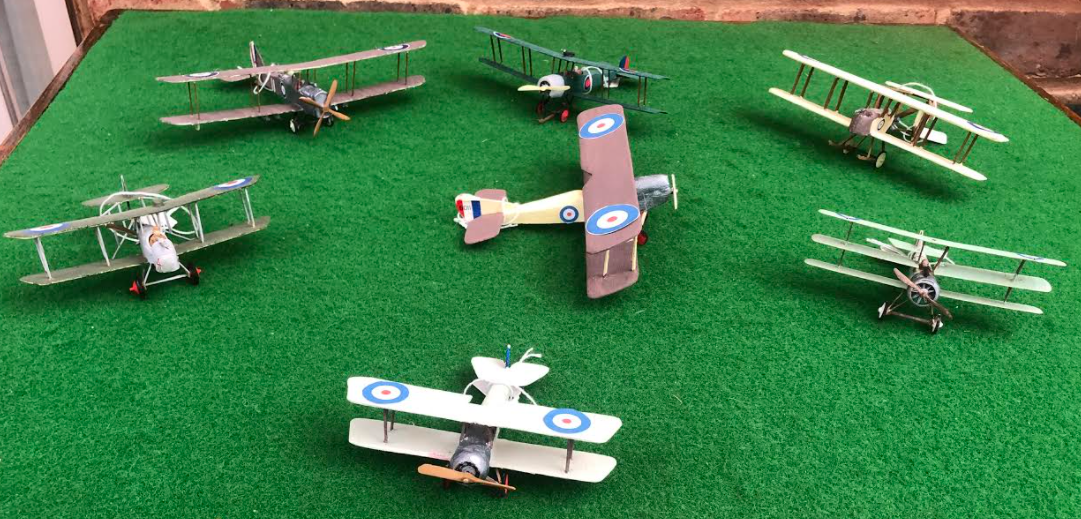Selection of British Aircraft

Centre = Martinsyde Elephant
The Royal Flying Corps
The RFC was the direct ancestor of the RAF. The term “flying corp” reflected the use that was made of aviation this moment of pioneers, a simple emanation of the army, devoted to observation. Unlike France, Britain had no active squadrons or aeronautical industry in 1914. Britain’s aircraft came, like most countries, from French productions. The British cockade was itself directly inspired by the French cockade, following misunderstandings and friendly shots due to the symbol of St. George cross drawn from the union Jack affixed to the first aircraft, confused with the German cross. But this industrial dependence, Britain began to get rid of it rapidly, and reached very high industrial standards in 1918.
At the outbreak of the war powered aircraft flight was just over a decade old, and its exploitation for military purposes around 5 years old. In 1914, the British air services had just 272 machines, but by October 1918 the newly formed RAF could call on 22,000 aircraft. Production rose from 50 per month in first year of the war to 2,700 per month by 1918.
British WW1 Aircraft Manufacturers
AD (later Supermarine)
Airco
Armstrong Whitworth
Austin
Avro
Beardmore
Blackburn
Boulton & Paul
Bristol
Fairey
Felixstowe
Flanders
Grahame-White
Handley Page
Martinsyde
Nieuport
Norman Thompson
Parnall
Pemberton-Billing
Royal Aircraft Factory
Short
Siddeley-Deasy
Sopwith
Tarrant
Vickers
White and Thompson
Wight
Note – The Royal Aircraft Factory was based at Farnborough. It was a design and aeronautical centre for Great Britain. Having designed a number of models, it passed over the manufacturing to a wide range of subcontracting Companies.
Aircraft of the Week

VICKERS F.B.5

Sopwith Triplane

MARTINSYDE G.100 “ELEPHANT”

Bristol Scout
Airco DH.4






